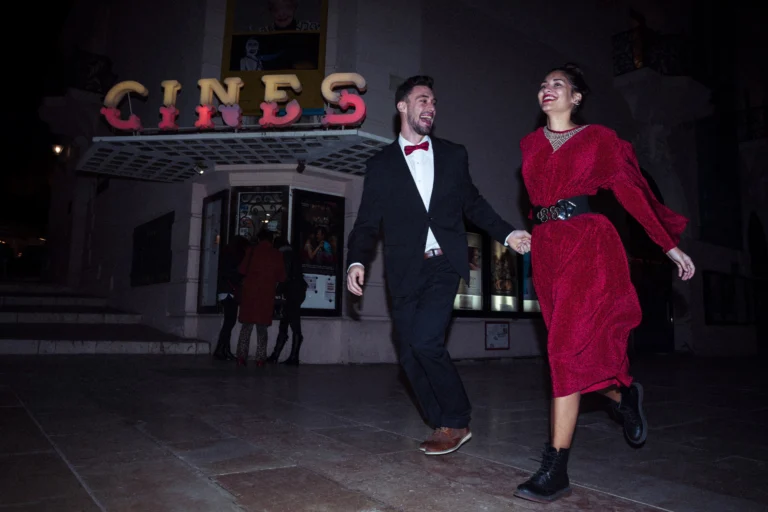Historical Representation in Period Dramas: Accuracy vs. Artistic Liberty. Period dramas have long captivated audiences with their grand visuals, compelling narratives, and rich depictions of historical settings. These films and television series transport viewers to bygone eras, immersing them in worlds filled with elaborate costumes, historical figures, and dramatic events. However, a significant debate persists among cinephiles and historians alike: how accurate should period dramas be?
While some productions aim for meticulous historical accuracy, others take creative liberties to enhance drama, pacing, or modern relatability. Understanding the balance between authenticity and storytelling is crucial in evaluating the cultural and educational value of these works.
1️⃣ Historical Accuracy: How Faithful Are Period Dramas to the Past?
One of the most discussed aspects of period dramas is their commitment to historical accuracy. While filmmakers often invest considerable effort in recreating the past, some compromises are inevitable due to artistic choices or cinematic constraints.
🎥 The Challenges of Achieving Historical Accuracy
Achieving historical precision in a period drama involves extensive research into:
- Costumes and Fashion – Designers study historical garments, fabrics, and accessories to ensure characters look authentic. However, some productions alter designs for visual appeal or practicality.
- Architecture and Set Design – Filmmakers attempt to reconstruct historical environments, but budget constraints or limited access to original locations often result in modified or recreated settings.
- Language and Dialogue – While using old dialects may enhance authenticity, it can alienate modern audiences. Hence, scripts often modernize speech while maintaining period-specific phrasing.
- Events and Timelines – Some historical narratives condense or rearrange events to fit a compelling cinematic structure, occasionally leading to historical inaccuracies.
🎞️ Examples of Historically Accurate Period Dramas
Some productions stand out for their commitment to authenticity:
- “Barry Lyndon” (1975) – Stanley Kubrick’s masterpiece is praised for its use of candlelit cinematography, period-accurate costumes, and meticulous research into 18th-century Europe.
- “The Crown” (2016–present) – Netflix’s hit series about the British royal family blends dramatization with historical precision, using extensive archival research to depict real-life events.
- “12 Years a Slave” (2013) – Based on Solomon Northup’s memoir, this film portrays the brutal realities of slavery with harrowing accuracy.
Historical Representation in Period Dramas: Accuracy vs. Artistic Liberty
The Allure of Period Dramas
Period dramas have long captivated audiences with their grand visuals, compelling narratives, and rich depictions of historical settings. These films and television series transport viewers to bygone eras, immersing them in worlds filled with elaborate costumes, historical figures, and dramatic events. However, a significant debate persists among cinephiles and historians alike: how accurate should period dramas be?
While some productions aim for meticulous historical accuracy, others take creative liberties to enhance drama, pacing, or modern relatability. Understanding the balance between authenticity and storytelling is crucial in evaluating the cultural and educational value of these works.
Historical Representation in Period Dramas: Fact, Fiction, and Everything In Between
The Allure of Period Dramas
Period dramas have long captivated audiences with their breathtaking visuals, intricate storytelling, and evocative portrayals of historical events. Whether it’s the grand courts of 18th-century Europe, the turbulent landscapes of war-torn nations, or the intimate lives of historical figures, these films and TV series offer a window into the past. However, how much of what we see is actually accurate?
While some productions meticulously adhere to historical records, others take artistic liberties in favor of dramatic storytelling. This delicate balance between accuracy and entertainment is one of the most debated aspects of period dramas. But what do audiences really look for when watching these historical adaptations? Below, we explore four key aspects that shape the representation of history in period dramas.
1. Historical Accuracy vs. Creative License
One of the most common questions surrounding period dramas is: How accurate are they? While some productions invest heavily in research and authenticity, others prioritize engaging narratives over factual representation. Filmmakers often face the challenge of condensing complex historical events into digestible, dramatic arcs, leading to necessary alterations.
For instance, films like Schindler’s List (1993) and 12 Years a Slave (2013) are lauded for their commitment to realism, whereas productions like Braveheart (1995) and The Other Boleyn Girl (2008) have been widely criticized for historical inaccuracies.
However, bending the truth is not always detrimental. Some of the greatest period dramas employ historical fiction as a tool to explore themes and emotions rather than just recounting facts. The 2019 film The Favourite took liberties with the personal lives of Queen Anne and her court, but in doing so, it provided a satirical and thought-provoking examination of power and manipulation in the 18th century.
The Role of Historical Consultants
Many productions hire historians and experts to ensure a degree of authenticity. For example, The Crown (2016–2023) worked closely with royal historians to depict key moments in Queen Elizabeth II’s reign, although it still took creative liberties for dramatic effect. The extent to which historical consultants influence a film’s final portrayal often depends on the director’s vision and the demands of the story.
While purists may argue for 100% historical accuracy, others believe that a degree of artistic license is acceptable if it serves the story’s purpose. But where should filmmakers draw the line between fact and fiction?
2. Costumes and Set Design: Bringing the Past to Life
One of the defining elements of period dramas is their commitment to visual authenticity. Lavish costumes, meticulously crafted sets, and historically inspired cinematography play crucial roles in immersing audiences in a bygone era. However, just like with historical accuracy in storytelling, costume and set design often take creative liberties.
Many productions aim for an authentic representation of fashion and architecture. For instance, Pride & Prejudice (2005) and Downton Abbey (2010–2015) are celebrated for their period-appropriate designs, created through extensive research. Designers study paintings, historical garments, and archival materials to reconstruct clothing with precision.
However, some films intentionally modernize costumes to create a contemporary appeal. Marie Antoinette (2006), directed by Sofia Coppola, famously incorporated pastel-colored Converse sneakers into its wardrobe, blending historical aesthetics with punk-rock sensibilities. While this creative choice sparked debate, it successfully reinforced the film’s rebellious and anachronistic tone.
The Impact of Costumes on Historical Perception
Costume design in period dramas influences how audiences perceive history. When done accurately, it educates viewers about fashion trends and societal norms of the time. However, when stylized for dramatic effect, it can create misconceptions. For example, the popular trope of women wearing tight corsets to the point of fainting is more of a Hollywood exaggeration than a historical reality.
Ultimately, while some audiences value authenticity in period dress, others appreciate stylized interpretations that enhance the film’s emotional and thematic impact. The key is striking a balance between accuracy and cinematic storytelling.
3. Portraying Historical Figures: Ethics and Challenges
One of the biggest challenges in period dramas is the portrayal of real historical figures. Filmmakers must decide how much creative license to take when dramatizing the lives of kings, queens, revolutionaries, and everyday people from the past.
Some productions aim for faithful portrayals, using primary sources, letters, and biographies to construct an accurate image. For example, Lincoln (2012), directed by Steven Spielberg, was praised for Daniel Day-Lewis’s meticulous performance and the film’s careful attention to historical detail.
However, other films take liberties with characterization for the sake of entertainment. The Tudors (2007–2010) significantly altered Henry VIII’s appearance and relationships, while Braveheart exaggerated William Wallace’s role in Scottish history. These changes often spark controversy, as audiences may mistake fiction for fact.
The Ethical Dilemma of Historical Fiction
When do alterations become problematic? There is a fine line between dramatization and misrepresentation. Misleading portrayals can shape public perception and even alter historical narratives in popular culture.
For instance, The Greatest Showman (2017) presented P.T. Barnum as a visionary entertainer but omitted many of the ethical controversies surrounding his treatment of performers. While the film was a box-office success, it drew criticism for its sanitized version of history.
Conversely, some period dramas use creative storytelling to highlight overlooked aspects of history. Harriet (2019) brought Harriet Tubman’s story to the forefront, dramatizing her bravery while staying true to the spirit of her legacy. These cases demonstrate that historical representation in film is as much about ethical responsibility as it is about entertainment.
Historical Representation in Period Dramas
The Challenges of Historical Accuracy
One of the greatest difficulties in period dramas is achieving a balance between historical accuracy and storytelling. Filmmakers often face the challenge of presenting an engaging narrative while maintaining fidelity to the events, customs, and social dynamics of the time period being depicted.
The Struggle Between Fact and Fiction
Period dramas frequently take creative liberties for the sake of entertainment, simplifying complex historical events or altering timelines to better suit the story. While some argue that these changes dilute the authenticity of history, others believe they help engage audiences and make historical narratives more accessible.
For instance, Braveheart (1995) received widespread acclaim for its epic storytelling, but historians criticize its numerous inaccuracies, such as the portrayal of William Wallace’s background and the timeline of the First War of Scottish Independence. Similarly, The Tudors (2007-2010) dramatized the reign of Henry VIII but made significant alterations to historical figures and events to heighten drama and intrigue.
Costumes and Set Design: Realism vs. Aesthetic Choices
Costume and set design play a crucial role in creating a believable historical atmosphere, yet they are also subject to artistic interpretation. Some films and series prioritize absolute historical accuracy in wardrobe, while others take liberties for visual appeal or practical reasons.
A notable example is Marie Antoinette (2006), which featured extravagant and historically inspired costumes but also included anachronistic elements such as pastel-colored Converse sneakers, blending history with modern stylistic choices. In contrast, Barry Lyndon (1975) is celebrated for its meticulous attention to historical detail, using natural lighting and authentic 18th-century costumes to enhance its realism.
The Role of Representation and Diversity in Historical Dramas
As discussions about diversity and representation become more prominent in the entertainment industry, period dramas are increasingly scrutinized for their portrayal of race, gender, and class. Some productions have sought to challenge traditional casting norms by incorporating diverse actors in roles that might have historically been reserved for white European characters.
Colorblind Casting and Historical Revisionism
Films and television series such as Bridgerton (2020-) have embraced colorblind casting, reimagining the Regency-era British aristocracy with a racially diverse cast. While some viewers appreciate this inclusive approach, others argue that it distorts historical realities and undermines the struggles of marginalized groups in past societies.
Another example is Hamilton (2015), the groundbreaking Broadway musical that cast Black, Latino, and Asian actors in the roles of America’s Founding Fathers. While praised for its innovative approach, some critics contend that it glosses over the complexities of historical figures and their ties to slavery.
Women’s Roles in Historical Dramas
Many period dramas take liberties in portraying women’s roles, often depicting female characters with more agency and independence than they would have historically possessed. While this can be empowering for modern audiences, it sometimes leads to anachronistic portrayals.
For example, The Favourite (2018) presents a bold and unconventional interpretation of Queen Anne’s court, highlighting female power struggles in a way that prioritizes drama over strict historical accuracy. On the other hand, Portrait of a Lady on Fire (2019) provides a deeply researched portrayal of women’s artistic and romantic lives in 18th-century France, offering a more nuanced and historically grounded perspective.
The Evolution of Period Dramas: From Classic Cinema to Modern Streaming
Period dramas have evolved significantly over the decades, with shifting trends in storytelling, production values, and audience expectations. Classic Hollywood films like Gone with the Wind (1939) set the standard for grand historical epics, while modern streaming services have popularized serialized period dramas with greater depth and character development.
The Influence of Streaming Platforms
With platforms like Netflix, HBO, and Amazon Prime investing heavily in period dramas, the genre has seen a resurgence in popularity. Shows like The Crown (2016-) and Peaky Blinders (2013-2022) offer detailed explorations of historical figures and events, blending high production values with compelling storytelling.
Additionally, streaming services allow for greater experimentation in storytelling, enabling filmmakers to explore lesser-known historical narratives and diverse perspectives. This shift has led to the rise of international period dramas, such as Pachinko (2022), which delves into the experiences of a Korean family spanning multiple generations.
The Future of Historical Representation
As period dramas continue to evolve, the debate over historical accuracy versus artistic interpretation will persist. While some productions strive for authenticity, others prioritize engaging narratives and inclusivity. Ultimately, the success of a period drama lies in its ability to balance historical representation with compelling storytelling, ensuring that history remains both accessible and captivating for modern audiences.


